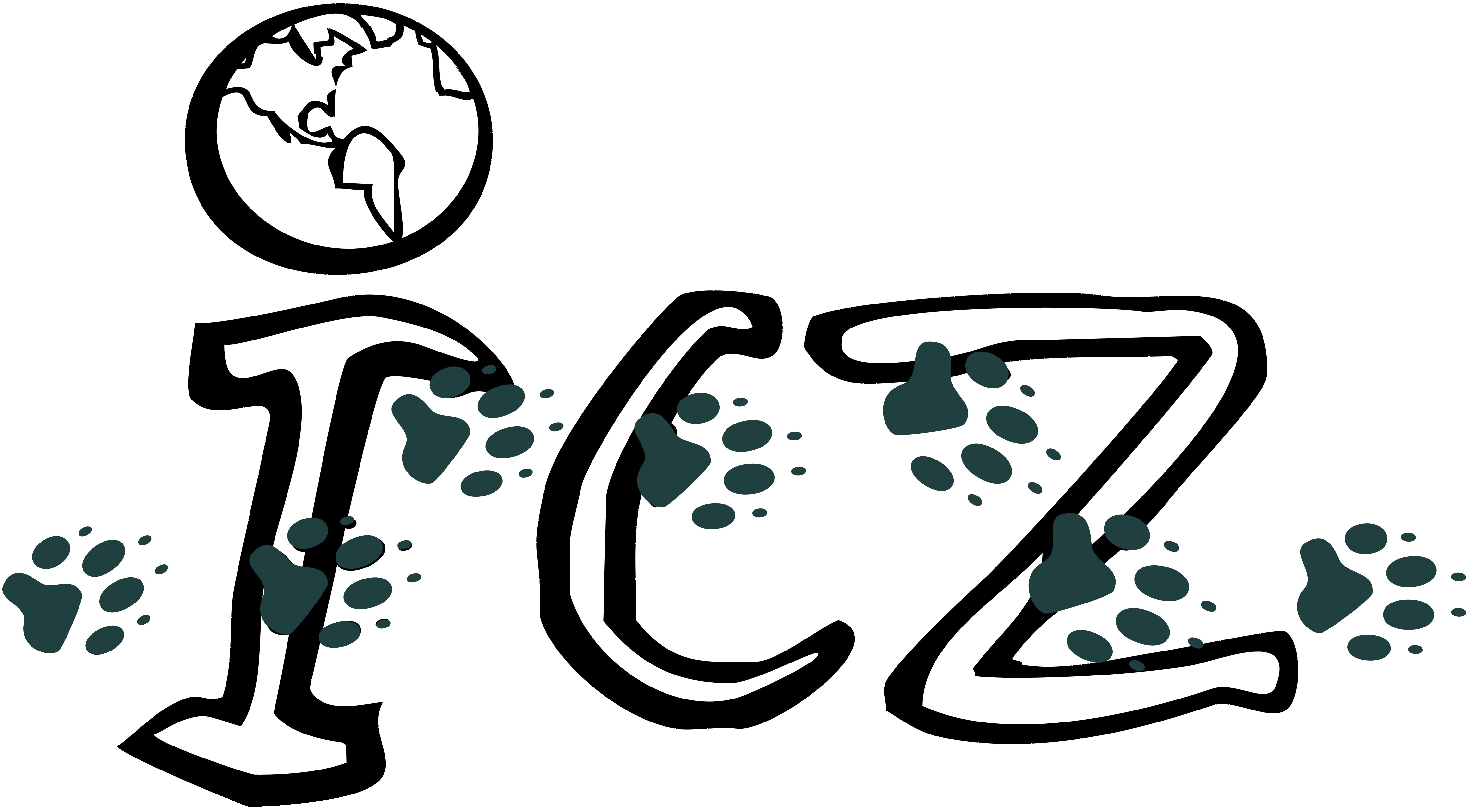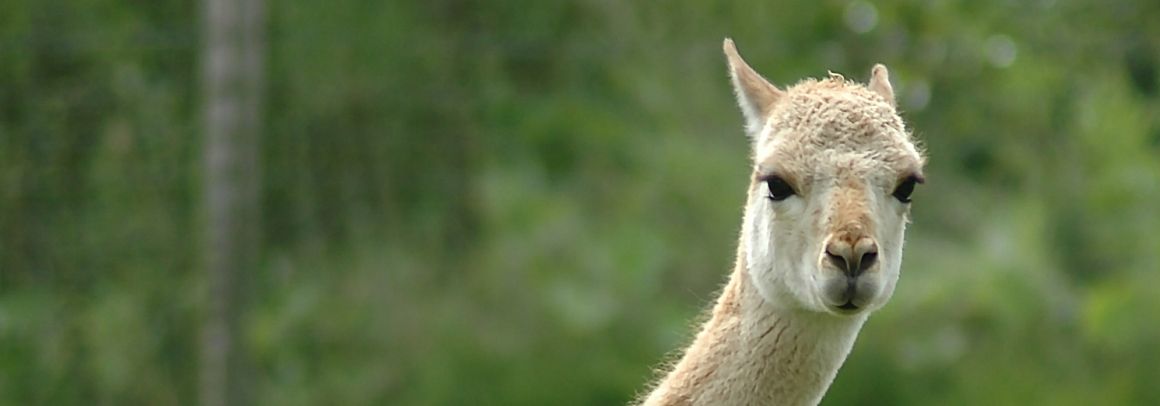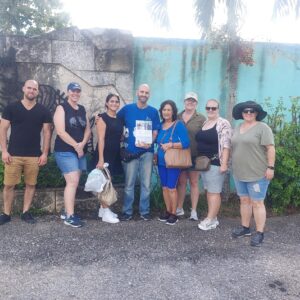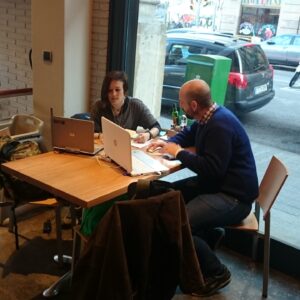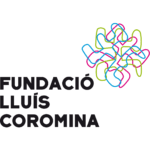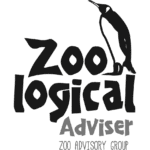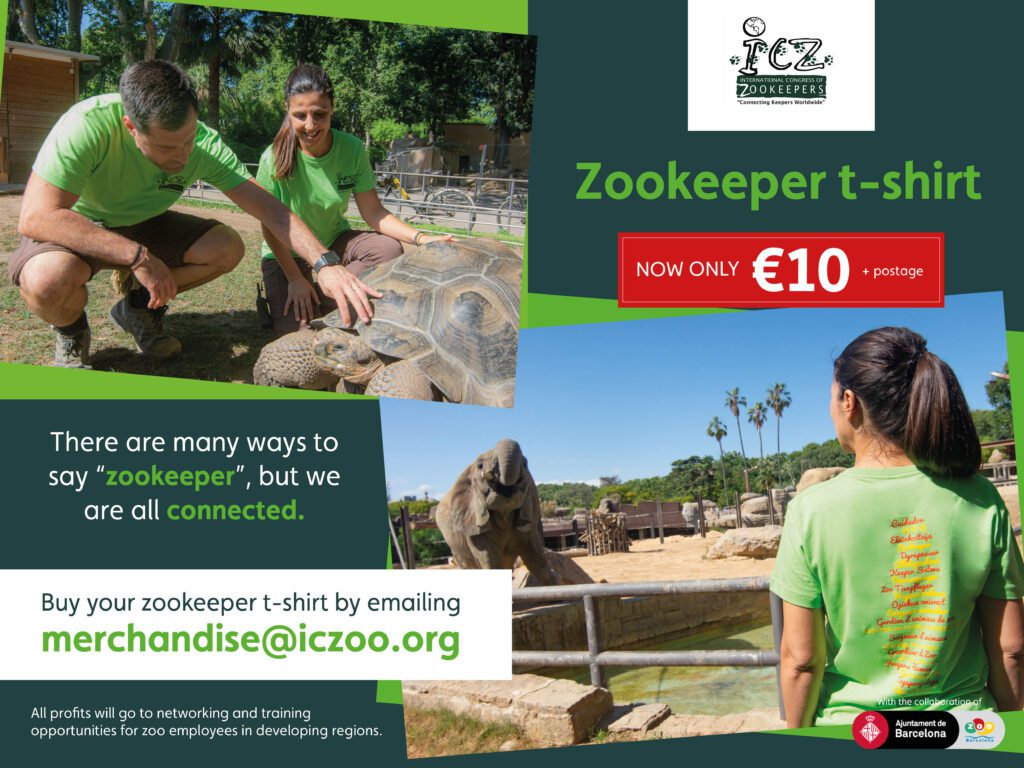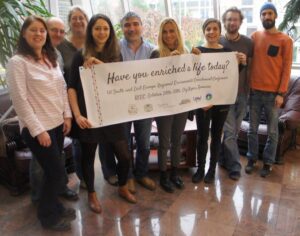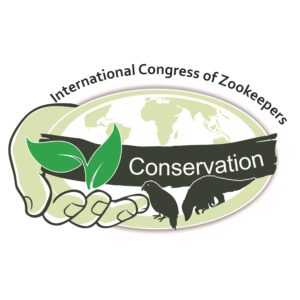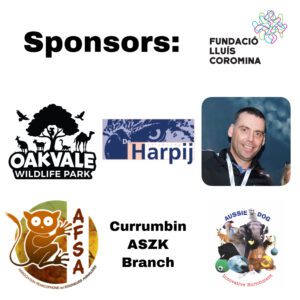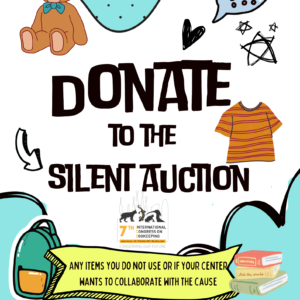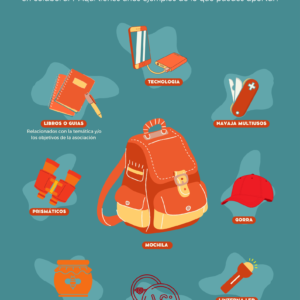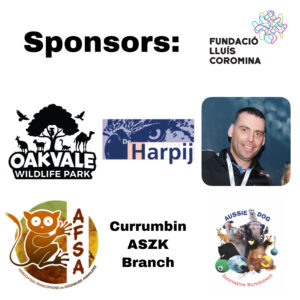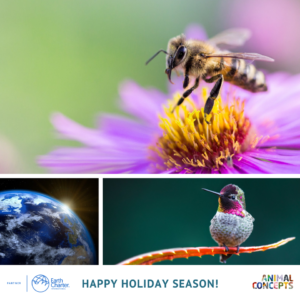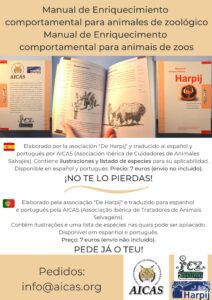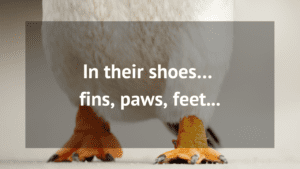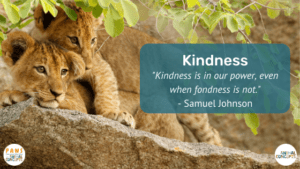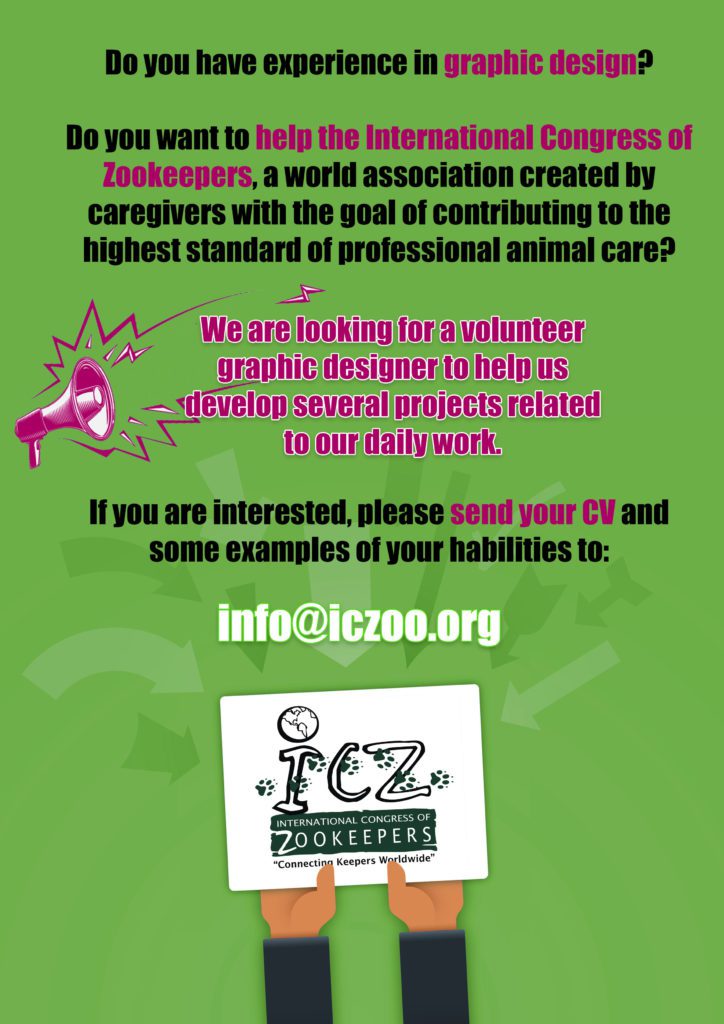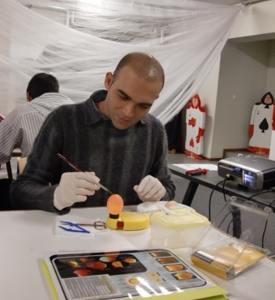Proximity does not equal fluency
By Sabrina Brando
I just finished reading this wonderful book, My Amphibious Soul, by Craig Foster, the South African filmmaker and storyteller known for the excellent documentary My Octopus Teacher. Early in Chapter 3, he says something that hits me right in the heart: Proximity does not equal fluency. And I think he is right. Just because I worked with dolphins and other wonderful individual animals across a wide variety of taxa, and I do not believe I was fluent in understanding any individual of any species, even if I spent many hours a day with or around them, reading and studied, and tried my best. Of course, I only expect to understand anyone to a certain degree; being fluent is a big word and an even more enormous task. I am half Dutch and half Italian and lived most of my life speaking English. I am still learning the languages and the nuances and opportunities that open up when I can be more detailed about a topic and have a more meaningful or fun connection with someone because it is easier to understand the other.
Fluent can mean so many things: in friendships and other relationships, it is often pointed to as knowing the other so well we can anticipate their needs, we can finish sentences someone starts, and see when words like ‘I am doing ok’ do not match their behaviour and mood. And proximity? I have worked closely with many animals in free contact and protected contact; I was there and thinking about them when I was home, at weekends, or on holidays. I was not necessarily worried or concerned, just because I cared for and loved many of them. Sometimes, something would happen when doing something different, not connected to work or the animals. I would be reminded of one animal or a group of them, something funny or touching, and I could feel the invisible string that connects me even when I am not there. This highlights that the word proximity means being physically close, working with the animals, and holding many of them close even when I am far away. I have not worked directly with animals for many years as most of my work is focussed on working with and for people like you, who care for the animals, but even when they are no longer with me, some have also passed on, that string is still there, and I cherish it. This is especially true with my favourite animals because while they say we shouldn’t have favourites. We all do, anyway. We all have favourite animals, which is absolutely ok. Proximity as animal caregivers requires us to give the best care we can to each individual and get to know them as much as possible while at the same time being honest that we like some animals more than others. Same with people, right? I do not even like everyone, so why have the illusion that everyone should like me or expect this from an animal or person? We can work as professionals in compassionate, respectful, and caring ways without having to like other people or animals. To me, being able to do this is a form of fluency. Accepting that I do the best I can with what is available and that I will never know it all and be perfect at it is also a type of fluency.
Over the years, I have met many caregivers – from those directly working with animals and those in supporting roles like the CEO, while visiting facilities, attending conferences, and online, and their sheer commitment is inspiring and wonderful. Of course, I also met those who do not seem to care much or individuals, teams, and even organisations who are so busy arguing and conflicting with each other that they have lost sight of why they are there in the first place. They have lost proximity to what matters most, as well as the behaviours, thoughts, and actions that support and promote us to be a little more fluent around the animals in our care and care for each other. Proximity is not fluency, which reminded me of a quote in a recent newsletter quoting the words of John Steinbeck: “I wonder how many people I’ve looked at all my life and never seen.” I think this is true for animals, too; who did I not see in the broadest sense of the word? Who did I not know because I did not pay attention meaningfully, or who did I not see because I was too annoyed, proud, or fed up?
Fortunately, in my work, and I hope this feels true to you too, there are many things to celebrate, and which are good. Many animals and people bring joy, hope, and even healing to my life. We can be compassionate and focus on what is positive and possible while acknowledging the challenges, nonsense, and sorrows and not being overcome by them. We can care for ourselves, taking care to give care, as we say at AnimalConcepts. When we care for ourselves, we can care for the other: animals, people, or planet. Proximity is not fluency, which is true. We will never be able to attain it, and that is okay. I believe what is most important is that we do the best we can, use our experiences, and know that we are forever students. We bring compassion, science, ethics, art, and lots of love and care. We continue practising watching with fresh eyes, nourishing the beginner’s mind, and staying humble and open. We can focus on what matters most in our work – who matters most. We can focus on being as close and connected to ourselves as possible. To remember that “I am the only person I will spend the rest of my life with”, and I can be accepting, integrating, and practising, becoming a little more fluent through care by saying and doing yes to what nourishes and supports us, discipline and take ‘vitamin N – learn to say no’ – Eliud Kipchoge, and compassion (which we can see as being empathy + action). And, of course, every day is Day 1, and we do this on repeat. We can take a deep breath, pause, and focus on what we can do now in the proximity of animals, people, and the planet, so we become a little more fluent every day and feel good while doing good.
Winner ICZ Photo Competition 2024
Earlier this year the International Congress of Zookeepers (ICZ) invited you to submit photographs that portray zookeepers and aspects of their working life. We received almost 100 photos from people all around the world.
We are pleased to announce the top 3 as judged by the Steering Committee of the ICZ:
3: Maxine Bradley
2: Patricia Scanlan
1: Elisa de Jong
 Elisa will receive a copy of All the Mammals of the World from Lynx Nature Books. Within the covers of this 800 page book you will find beautiful illustrations of all the 6459 known extant, wild mammal species in the world. That is 7349 illustrations, including sexual dimorphism, distinctive subspecies and morphs and 6459 distribution maps.
Elisa will receive a copy of All the Mammals of the World from Lynx Nature Books. Within the covers of this 800 page book you will find beautiful illustrations of all the 6459 known extant, wild mammal species in the world. That is 7349 illustrations, including sexual dimorphism, distinctive subspecies and morphs and 6459 distribution maps.
Thank you to everyone who entered the competition and congratulations to Elisa for winning this great price.
Thank you to Lynx Nature Books for kindly sponsoring this competition!
Supporting Boris's Family: A Joint ICZ & AICAS Project
by Raúl Cabrera, Vice-President of ICZ & AICAS Representative
 Today, November 23rd, 2023 I’m coming back home from my trip to Cuba where the ICZ board members had a meeting for five very intense days, with long days of work in which the guidelines of the association for the coming years have been established and where we have set up dealines for all of our actions, which include the next international congress of the ICZ, the ninth of its kind, and that will be hosted by the Wellington Zoo in New Zealand.
Today, November 23rd, 2023 I’m coming back home from my trip to Cuba where the ICZ board members had a meeting for five very intense days, with long days of work in which the guidelines of the association for the coming years have been established and where we have set up dealines for all of our actions, which include the next international congress of the ICZ, the ninth of its kind, and that will be hosted by the Wellington Zoo in New Zealand.
In these days we have the chance to visit our partners from the Parque Zoologico Nacional in La Habana, greet them, and grow the global information network we have among professional wildlife keepers around the world.
Once out of schedule and after those days, I was able to complete an action that we started in 2015, one that involved the tribute from AICAS and ICZ to a deceased colleague, Boris Planell, who left a great memory in all of us who knew him.
I met Boris at the 3rd AICAS congress in 2007, and subsequently at some other congresses or events organized by AICAS in which a friendship was forged between him and the members of the AICAS Board and those attending said events.
Boris was born in La Habana, he studied biology, specialized in ornithology, and realized several studies about the conservation status of some Cuban endemic species, among which were the Cuban amazon (Amazona leucocephala) and the Cuban parakeet (Psittacara euops). After a professional period working in different Cuban zoological institutions, including the Parque Zoologico Nacional and the La Habana Zoo, he came to Spain leaving behind his family, especially his mother and two daughters whom he had told us so much about.
After a few years in which he worked in Zaragoza, where he did not stop training in different courses, conferences, and more, he went back to his country in October 2014 and died in January 2015 as already published in the AICAS bulletin no. 30.
We are all greatly sorry for his loss. He was a generous person, a good companion, kind, polite, attentive, and always willing to learn and help. It was then that after several inquiries to find out if we could help his family by sending some personal effects that could have been left in Zaragoza, we were aware of the existence of 5 boxes of valuable material for those of us who love animals and nature, among which there were fauna guides, publications on management and care of species, scientific articles, popular science books, fauna atlases, bulletins and magazines of the associations to which Boris belonged, among others. It was thanks to Javier that we were able to access said material, and on two consecutive trips I took photos of each book and later moved them to my home to begin the dissemination through AICAS, which was dedicated to the project at all times. The idea was to gather some money for Maritza, Katherine, and Karen, his mother and daughters.
At that moment, the collaboration of Mireia Rosillo, an AICAS colleague and friend, was decisive, as she scanned almost 500 publications and looked for the approximate prices of each one on the internet, after which we decided on a lower price to be able to make it attractive and sell them easily. Mireia dumped all that information into a database. Since then we started a campaign to help Boris’s family that we spread through social networks and the website of both AICAS and ICZ, among colleagues, family, and friends, and of course among the different conferences and events organized by both institutions.
There are so many people who have helped that they would not fit into any publication or several that would not fit into this article. To each and every one of them thank you very much for your help and generosity. Thanks also to Javier and Mireia who made it possible, and to AICAS and ICZ for their involvement. I take this opportunity to tell you that there are still publications and that you can request the list at rcabrera@iczoo.org
Thanks to everyone we have been able to raise 1500 euros for his family and on these days that I have visited them I have already delivered the first part in person. It has been very emotional and satisfactory. After many hours of work, a lot of effort, and energy dedicated, it has been worth waiting so long to be able to carry out an action that has made us all so happy.
It has made those of us involved happy for setting goals and meeting them, to you for showing that animal caretakers are altruistic and supportive, and for Boris’s family because it is a little help that comes at a time when the country’s economic situation is somewhat complex. But above all, we think we are honoring and making Boris happy, for having brought his “treasure” as he called his book collection, to people who value them and will take care of them, but also for having brought help to what he loved most: his family.
We sure made him smile. Enjoy your smile, Boris.
We continue the work and we will never forget you.
With love, and on behalf of AICAS and ICZ,
Raúl Cabrera Porcel
Recipient ICZ Keeper Conservation Grant 2024

This grant will go a long way in supporting the work done by Angkor Centre for Conservation of Biodiversity (ACCB) to protect the Sarus crane, which is the largest species within the crane family, and the tallest flying bird in the world. Once widely distributed throughout South and Southeast Asia, these incredible birds are now confined to only a handful of subpopulations, with the largest endemic to Australia and India. The last remaining stronghold in Southeast Asia resides in Cambodia, where the Eastern Sarus Crane (Grus Antigone sharpii), is in serious decline due to habitat loss and largescale land conversion for commercial farming practices.
Thank you to everyone who submitted an application. All the projects were of a very high standard and the panel of judges had a difficult time in scoring the submissions.
Congratulations!!
We will keep you updated about the work carried out by all the projects.
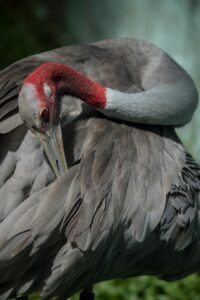
We would like to thank the sponsors for the ICZ Keeper Conservation Grant 2024:
Zookeeper t-shirt - now only €10,-
Vacancy independent SC member
The International Congress of Zookeepers (ICZ) is looking to widen our representation; we would like to
involve new Steering Committee members who are not connected to one of Steering Members. Would you like to devote some of your time working in a diverse team to achieve something for the betterment of the profession? Download the vacancy and apply!
Blog: How can I make you feel better today?
By Sabrina Brando
This article is in memory of Valerie Hare (3rd from left) and Graham Law (light blue shirt). You are both dearly missed.
I watched an episode of Royal Pains, an easy going and fun series about a concierge doctor’s practice called HankMed in the Hamptons. When answering the phone, they say: “How can we make you feel better today?”.
Of course, I am not suggesting that all the animals we take care of are sick or not having good welfare. I do like this client-centred approach where one is sensitive to another’s needs, such as comfort, the feeling of being important and cared for. The animals we care for are all important individuals and I like the idea of asking “how can I make you feel important today?”. To stand still frequently in our regular and busy working day and pause, to connect to the animal and tune in more deeply. What is it that I can do for you to make it better? How can I make your environment safe (physically and psychologically), complex, stimulating, with choice and control? How do I support social opportunities, learning new skills, relaxed sleeping and resting areas, things to do and choose when I am not there? What can I do to make you feel good, to make you feel important and cared for?
We should not do what we do just because we are busy, or just because we have always done it this way which is a common sentiment and hurdle in the progress of animal care, and an obstacle to providing the animals with the best welfare standards and according to best practice. Perhaps the way we have always done it is the best way, but we have to stop to ask the question. We should challenge the status quo and push the envelope, challenge ourselves and others in order for our programs to reflect best practice and excellent in care.
If every time I come to work, I ask, how can I make you feel important today & how can I enrich a life today?, I am more mindful of what I do and why in my aim of giving the best care for an individual animal and or the group. Or for anyone else around me, and myself, and I can keep little notes in a notebook or on my phone to remember what went well, what efforts I made. Asking myself at the end of the day ‘Have you enriched a life today?’, is a nice way to stand still and acknowledge the day, that I have tried my best, and celebrate. Especially on hard days it can be helpful and kind to review the positive feedback, the happy behaviours or interactions. You can control only yourself by being the change in the world we would like to see we can inspire others to also do this, and together we can be a force for good.
Winner ICZ Keeper Conservation Grant 2023
The ICZ are pleased to announce the recipient project for the “ICZ Keeper Conservation Grant 2022” ($US 1,000) is the “Community-Based Bali Starling Breeding and Release Program and Conservation-Based Education in Melinggih Kelod Village” in Indonesia.
This grant will go a long way in supporting the work done by the project by helping fund vital supplies and equipment.
Thank you to everyone who submitted an application. All the projects were of a very high standard and the panel of judges had a difficult time in scoring the submissions.
Congratulations!!
We will keep you updated about the work carried out by all the projects and again we want to thank
- Fundació Lluís Coromina (Spain)
- Oakvale Wildlife Park (Australia)
- Mr. Richard Roswell (Australia)
- Stichting de Harpij (Netherlands & Belgium)
- Currumbin ASZK Branch (Australia)
- Mr Joe and Mrs Joey Parsons (Aussie Dog)
- AFSA (France)
for sponsoring that ICZ grant.
Blog: Human-animal interactions
by: Sabrina Brando
Evidence of relationships between humans and animals dates back thousands of years, from stories of wolves and the domestication of wild species, such as jungle fowl, to whom we know today, the chicken. Of course, animals in other places such as farms, research centres, sanctuaries, zoos, aquariums and more, there are so many animals and also have many different roles and effects of these roles. Being a guide dog for the blind, a horse in a riding stable, or a gorilla in a zoo, there are a lot so details to think about when it comes to the interactions, direct or indirect, we have with the animals in our care.
We can speak of human-animal interaction (HAI) when an animal or human performs a behaviour directed towards the other, and when repeated can result in human-animal relationships (HAR). A relationship is considered in place when interactions lead to predictions of how the other is likely to behave and behaviour is modified accordingly. The quality of the interactions will determine whether a positive, neutral, or negative
relationship forms, and relationships, if positive, may develop into bonds. You only have to use Google scholar to find several publications on these topics in zoos and aquariums.
A human-animal bond (HAB) is defined as ‘a mutually beneficial and dynamic relationship between people and animals that is influenced by behaviours essential to the health and wellbeing of both’ (AVMA). For a relationship to be classified as a bond between a human and an animal should be between an individual human and individual animal, be reciprocal and persistent, and promote an increase in well-being for both parties (Russow, 2002).
Zookeeper t-shirt
Introducing our new ICZ t-shirt highlighting that although there are many different ways to say zookeeper, we share the common goal of providing excellent care to our animals. T-shirts cost 12€ (+ shipping) and can be ordered by emailing merchandise@iczoo.org By purchasing a t-shirt, you will be helping ICZ fulfill its goal of helping to train and network zookeepers, especially in countries where such opportunities are not available or very limited. A special thanks goes out to Montse Martin and Alex Zubero (keepers from the Barcelona Zoo), to photographer Jaume Martin (@wildlife_by_jaumemartin) and to our designer, Deborah Nolan (@dncreativedesign) for donating their time and energy to this campaign. We would also like to thank the Barcelona Zoo for their collaboration. We look forward to seeing you in Barcelona at ICZ 2022 to celebrate IZD while wearing your t-shirt.
ICZ on the war in Ukraine
Over the last twenty-two years, the International Congress of Zookeepers (ICZ) has witnessed first-hand, the dedication and passion that drives and connects zookeepers who care for their animals around the world, regardless of culture, religion, or country of residence. This commitment is undoubtedly embodied by keepers in Ukraine, who have chosen to continue to care for their animals, despite the increased danger to their own safety and the uncertainty that war brings. It is also embodied by those individuals who have helped move animals out of Ukraine, and by those who have perhaps had to make the difficult decision to leave the care of their animals to others. We are zookeepers worldwide who all want what is best for our animals. Our quality of work is their quality of life! We stand in full support of the zookeepers in Ukraine and Russia. We stand strong as a global network of zookeepers!
If you want to help our colleagues in Ukraine, we encourage you to contribute to EAZA’s Emergency Appeal for Ukrainian Zoos.
Winner ICZ Keeper Conservation Grant 2022
The ICZ are pleased to announce the recipient project for the “ICZ Keeper Conservation Grant 2022” ($US 1,000) is “The Andean condor (Vultur gryphus) as an umbrella species to protect the Almorzadero paramo, the local community and the biodiversity“.
This grant will go a long way in supporting the work done by Fundación Parque Jaime Duque to protect the Andean condor. This will also help increase the respect for this endangered species in Colombia, an area of conservation importance.
This project was submitted by Estefanía Gómez Betancurt, Environmental Project Manager from Fundación Parque Jaime Duque, Colombia. She coordinates this project with involvement from raptor keepers from different institutions.
Thank you to everyone who submitted an application. All the projects were of a very high standard and the panel of judges had a difficult time in scoring the submissions.
Congratulations!!
We will keep you updated about the work carried out by all the projects.
The ICZ want to thank the following sponsors for their generous donations:
- Fundació Lluís Coromina (Spain)
- Oakvale Wildlife Park (Australia)
- Mr. Richard Roswell (Australia)
- Stichting de Harpij (Holland & Belgium)
- Currumbin ASZK Branch (Australia)
- Mr Joe and Mrs Joey Parsons (Aussie Dog)
- AFSA (France)
Blog: Environmental enrichment as the sprinkles on top
By Sabrina Brando
What do we mean by environmental enrichment? As with anything, it is always good and helpful to understand where things came from. Environmental enrichment was born from something that the words reflect: enriching the environment.
Not long ago, and even today, animals in all kinds of systems can find themselves in environments that are not enriching, which are lacking in stimuli, in opportunities, complexity, and therefore a lack of choices and control and ability to exercise one’s agency. Some of these areas are still very much lacking, think for example of the back of house areas animals can spend many hours in. Whether in zoos, aquariums, research laboratories, with farm animals, or animals in shelters and at home, we came to the realisation that we need to enrich the environment by adding structures (flexible, fixed, soft, hard, etc.), vegetations, substrates, considering their social needs, hiding places, places as viewpoints, shade, or spaces large enough to rest, play or sleep together. In the laboratory world, we often speak of environmental refinement, pointing to the fact that environments are not yet as good as they can be, or should be. Every time thinking and reviewing at how we can make things better.
Environmental enrichment should spring from always wanting to make things better, especially as captive environments can easily become static and monotonous over time. I think there are 2 main approaches and viewpoints we tend to currently find in facilities today: 1) enriching the environments to make them better – more biologically and ecologically relevant, and/or 2) enriching animals lives in general, making it fun, safe, engaging, and enriching regardless of whether what we do or provide is natural or not. These two can be complementary, overlapping and or in conflict with each other. I will review them both and propose and combined approach to which we should be moving.
Announcement: 7th ICZ Congress coming in 2022!
The 7th International Congress on Zookeeping will be held from 3 – 7 October 2022 in Barcelona Zoo, Spain. Where we will also celebrate International Zookeeper Day together!
Blog: Human wellbeing in animal care professionals
By Sabrina Brando
Since my first job almost 30 years ago, I have seen animals been born, cared for them daily, stayed the night if they were ill or when pregnant, been with them when they died. There are many stories of joy, of fun and success, of enrichment activities, behaviours trained, enjoying time together and play, of changes made. Good teamwork, seeing many animals flourish, and wonderful conservation, research, and education outcomes. Unfortunately, I have also worked in facilities where there was little or no regard for animal wellbeing – or human wellbeing. I have found myself in toxic work environments, have been bullied by bosses, and quit many paid jobs and volunteering positions. Did I have a role to play in that, could my communication have been better, could I…, well yes, every time these things happen there are a lot of sides to a story, however, many experiences were out of my control.
Harpij Enrichment Book available in Spanish and Portuguese
The “Harpij Enrichment Book” is now available in both Spanish and Portuguese versio, translated for AICAS. You can order yours in info@aicas.org for 7 euros (shipment not included).
The Harpij Enrichment Book is translated from Dutch to Russian, English, Spanish, Portuguese and Vietnamese as a result of zookeeping associations around the world working together as part of ICZ.
Blog: Back of house areas
By Sabrina Brando
Non-public animal areas in zoos, are often called ‘back of house’ (henceforth BOH), ‘off-display’, and also ‘bedrooms and ‘holding areas’. These are places where animals can often spend many hours of their days and lives. Great progress and many changes have been made improving animal quality of life in larger, more naturalistic and enriched indoor and outdoor display areas and with innovations such as activity-based design and management, animal rotation and lengthy exploration trail systems.
However, quality of life in the BOH areas has improved little in comparison, as most have not changed since they were built, and present management policies can result in animals being confined in less enriching spaces for substantial periods of the 24-hour day. While management practices have improved with positive reinforcement training and remedial environmental enrichment, basic structural, spatial and regulatory BOH environments are lagging. This section is part of a forthcoming paper titled Confronting Back-of-House Traditions: Primates as a Case Study and is in collaboration with Jon Coe: To substantially improve animal welfare in BOH environments we have reviewed traditional management policy and practice, include newer training, enrichment, welfare policies and actions, suggest issues and alternatives for structural environments (form, arrangement, furnishings and materials), and quality and complexity of spatial environments including ambient conditions (light, temperature, sound, etc.). This includes greater control of the ambient environment and choice of access to multiple areas by the animals themselves, designing for optimal animal wellbeing on a 24/7 basis. Case studies focused on primates are included. We conclude by suggesting a new integrated design model based not upon rote standards, and old models, but rather building on empirical foundations while embracing empathy and innovation.
Depending on facility and number of animals, as well as the influences of weather, animals can find themselves in for many hours in these areas and of course the question for us is, how can we meet them better?
We have outlined some of the details of our paper in a webinar we recently did for the EAZA Animal Welfare webinar series, and you can watch it via the EAZA YouTube channel.
While we would like to change to larger and different buildings, or are awaiting new facilities to be build, there are many things we can do today with the environments we have, and I know many of you are already doing this! I have seen even in very old buildings lots of activities and changes to reflect the needs and increase the activities that animals have when in these areas, including the times that we are not at the facility.
Also, consider the word ‘bedroom’ or night quarters, as when you think or say these words it is easy to think about sleeping and resting, because that is what we do at night. Of course, you know when working with certain species of animals that they wake up when we are going home, or ready to sleep, so if they find themselves in these BOH areas, what is there to do?
Some the things you can consider and do are (and many of you already are!):
- Can you use a wider variety of materials to increase the complexity and opportunities animals have?
- How can you use the whole of the environment? Think cubic meters!
- Can you create a list of enriching activities which have been approved for use when you are not at the facility?
- Have you created/updated an enrichment calendar for BOH areas, so that before all go home, all is set?
- For those who sleep at night, have you created opportunities for animals to choose different places to sleep, sleep socially, etc.?
- For those who are active, what plan do you have to provide opportunities?
- Have you added opportunities for animals to feed when you are not there through timers, frozen (if appropriate), puzzle feeders, and other release mechanisms?
- Can you create more space for option through an attached space from the outdoor area?
- Can you use some of the indoor areas to add additional space like attaching additional caging or using the care staff areas in a safe manner?
- Can you set up a detailed weather decision making tree to reduce moving animals indoors ‘in case the weather changes’?
- Can you (re)visit the 24/7 open access policy, do you have this and if not, why not? Spend some time thinking and talking through what the options are.
I can’t wait to hear and see all you are already doing, and new ideas you & your facility have. Let’s together make the BOH a better place for animals and move new designs forward! Do you have a story or examples to share? Please email me – already looking forward to hearing from you!
In their shoes… fins, paws, feet...
By Sabrina Brando
We are all thinking about animal care, including how we interact with them and ways we can impact their wellbeing ranging from negatively to positively, i.e., the quality of care. To think about how we do what we do is impacting them, or likely, or possibly impacting them.
One of the questions, or rather perhaps, exercises, I like to think about and engage in is: what it would be like to be in their position? Where they live, with whom, what opportunities and affordances they have, etc. This is a difficult thing to do and not without interpretational hurdles and problems, I know, I already hear the word anthropomorphism ringing in my ears.
I bet anyone working with animals would love to be able to be that animal or species or individual for 1 day (or longer)! To experience e.g., what the world is like for them, how do they experience varies things in their lives, how and what they think about, how do they feel and experience their world emotionally? Can we just be Dr Doolittle, please? We have so many questions about animals and how wonderful would it be to be able to ask, or to experience what it would be like in their shoes… fins, paws, feet…
There are many ways to try and gauge animal wellbeing, by for example observing how animals use their environment, who they interact with and how they do this, doing systematic preference testing, quantitative (where, how often, how long), and qualitative behavioural assessment (how, emotional expressive qualities of behaviour, a whole animal approach), there are many different ways to gain insights and do animal welfare assessments.
Considering that we cannot be a white rhino, cotton-top marmoset or iguana for a day we can use other methods to gain insights, to gauge their experiences. When thinking of animals under human care and how we can try to optimize and promote positive welfare for the animals, we try to imagine what a certain situation is like, and so many questions come to mind. One of the ways that can help us think about other animals, and consider the effects is Critical Anthropomorphism, first described by Professor Gordon Burghardt in 1985, where he introduces:
• Anthropomorphism – Attributing human characteristics to nonhuman entities (grievous sin)
• Anthropomorphism by Omission – Unwittingly neglecting the animal’s perspective and Umwelt (also a grievous sin)
• Critical Anthropomorphism – Using our stance as human beings to propose the occurrence of testable cognitive, emotional, and behavioural processes in other species informed by rigorous incorporation of empirical knowledge and research findings on physiology, sensory and neural processes, ecology, behaviour, sociality, and development (Essential Virtue)
“Judging other species using markers such as screams, smiles, or even speed of responding can be uncritically anthropomorphic and a hallmark of anthropocentrism!”
We of course gather all the information we can find to understand the biology, ecology, consider aspects of evolutionary significance, the background knowledge of a species. We also want to consider aspects of learning and training, differences between their wild and captive life, and identify possible indicators of wellbeing on a scale from poor to good (optimal).
There are many aspects in caring for animals that we can look at and see what they might be experiencing, and how we can refine/improve. For example, it is likely you know an animal who is constantly looking around and looking out. This could be in relation to a caregiver, where they are, when and what they are doing, as well as perhaps also looking for or at visitors.
Another animal might be sitting a lot of time in a tunnel that acts as a shuttle between in- and outdoor areas, or right in the door opening. He or she is monitoring the environment for what is happening, or sits high up overlooking, all can be a good thing as information seeking, understanding, and integration is an important part of an animal’s life. We know that exploring, gathering information, working for something, can potentially be intrinsically motivating. It also makes me think about the purpose and flow, such important drivers in human behaviour, but that is for another time.
However, if the frequency and intensity of all this looking around, searching and monitoring is very high or manifested in undesired behaviours, this can result in suboptimal wellbeing for an animal. Of course, a certain amount of vigilance is necessary and important and is part of the natural behaviour repertoire. However, we should evaluate and be attentive if an animal has high levels of vigilance behaviour which can indicate anxiety and uncertainty, feelings of unsafety. High vigilance also takes away from the time an animal could be interacting with other animals, reducing quality and quantity of rest and sleep, and or the reduction of other activities in the habitat. High vigilance is also a state of constant attention which is very exhausting, physical and mentally.
These high vigilance related behaviours are often related to high unpredictability, but also due to caregivers who were/are signalling changes they were/are making – like shutting doors when the animals did/do not expect it or want it, what has previously been learned, and a lack of cues in general. Having specific cues can help reduce uncertainty and signal what is going to happen, when, where and who, it signals good and aversive events so animals can anticipate what is coming rather than having to guess and figure it out. Have clear communication around what might be or is perceived as aversive, can help increase certainty, even if what is coming is not necessarily positive. Unpredictability without choices and control is not a favourable position to be in.
For example, we could decide to wear an orange suit only when we have to capture animals for medical checks. The orange suit will let the animals know what we are doing, and not wearing it will signal that no capturing will take place, which often reduces the stress related to these procedures. When the orange suit is worn, it is clear, capturing will take place.
We could something similar to reduce the high vigilance and monitoring behaviour by announcing a door will close, by for example saying ‘door’ ahead of time, and leaving time for an animal to make a decision and act on them. The animal then has the time to decide and move wherever he or she would like to be, rather than being surprised and caught somewhere undesired. This can be helpful for example when you are needing to capture an animal for a routine health check.
If it is a frequent event, it is preferable to teach animals to voluntarily participate in their health care therefore eliminating the need to capture or reduce it significantly.
A balance should be struck between predictability and unpredictability, with a favourable balance for the animals. More about predictability in another blog.
As a thought experiment, let’s go to go back to the animal which spends all this time observing.
Imagine you would be in your home but there are these people walking and working around you, closing and opening doors without your consent or at unpredictable times. They are allowing and removing your access to your food, other animals, areas and or activities, even a view but you do not have control nor choice over when and how this happens.
Where do you imagine yourself to be if someone could suddenly close a door to the kitchen or your bedroom if this is where you want to be?
You probably would want to be close to the kitchen door so you can quickly go through it if it looks they might close off your access to the fridge when you are hungry.
Or you might find yourself staying in the bedroom longer so you do not have to give up your bed, which you like, hence quickly taking breakfast back into bed.
Where shall you be positioned to survey when these people are controlling your access to the bed, the kitchen or spending time in the larger living room with games, TV, a larger and comfier place to lounge and or socialise, or even to get to the garden?
You start to feel annoyed I can imagine, and indeed, why should you have to choose, why should I have to be so concerned with these matters all the time? Why can’t the doors be open and you can choose where you want to be, when and with who.
Now go back to the animals we care for, we all know some animals who are concerned with being shut in or out. Animals who are identified as “difficult” like e.g., when shifting, moving into and through tunnels.
How we should look at this I think is that the animal(s) convey to us that they do not like the way we interact with them, how we have set up the environment, the types of options they have, etc. We should use this as information to improve what we do, with the focus on how. It is not only the end result we should keep in mind, but the way of getting there, the way of achieving this to be as or even, most important. See it as a dynamic approach always open to refinement.
There is immense power in asking questions, to go through exercises of wonder and enquiry. Another important exercise it to ask questions and understand what their life is like around the clock, across time. What seems to fit with our working style and hours is often not a good fit for many of the species we care for in captivity, from tigers, anteaters, bats to rats, fish or birds. Would a “24-hour zoo” that operates to accommodate and facilitates and promote optimal wellbeing not be fantastic? A 24/7 across lifespan approach, including those animals who are active when we are asleep, a zoo where animals can choose day and night as their exhibits are semi-automatic through modern technology.
If we put ourselves in their fins, paws, feet… we have to ask ourselves honestly what the real choices and control are the animals can exert over their environment, including their social life and more. How many real choices do the animals have when we control where, when, how, who and what in their environment? It is time to use modern technology to give animals more control over their environment, day and night, and to make them less dependent on us for what they want and need. If we house animals under human care we should do it at the highest standards, using all the available tools. More on that in another blog and check out our 24/7 animal wellbeing page.
Of course, not everything is possible all the time, nor is this necessary at all times. Live is full of restrictions, and animals can cope or learn to cope with these, and even better, exert their agency positively.
If we put ourselves in their ‘shoes’ then I think we would come to the conclusion that the real choices and control over the environment for most animals in captivity at the moment are not all they can be, and the good news, we – you and I, can do something about that.
You could do this at your facility: look around, think about choices and control the animals have you care for. When do they have it, over what, who decides, etc.? Only when we spend time thinking deeply about this and in combination with observations we can identify what is currently been done and what we can do to improve animal care. How we can add more choice and control, have open access, and indoor and outdoor areas that have similar value and opportunities, and more. It is not about acceptable or good, it should be the best we can do.
To us to challenge, to be innovative and creative, to accept the challenge so when one is asked the question in the future what it would be like to be in their shoes… fins, paws, feet… you might be able to answer “well if I would be an …. I think I would like to live in this place a lot!”
Recipient of the ICZ Keeper Conservation Grant 2021
The ICZ would like to announce the recipient for the ICZ Keeper Conservation Grant 2021 ($US 1,000) is the project titled: “Construction of warming ‘room’ to provide shelter for juvenile Indochinese silvered langur (Trachypithecus germaini) and Annamese silvered langur (T.margarita) rescued from the illegal pet trade in Cambodia”.

The ACCB is a partner of the IUCN SSC Asian Species Action Partnership (ASAP) working closely with Cambodian government authorities, and various national and international organizations. ACCB provides full-time employment to 34 Khmer nationals, making up 90% of employees, the majority of them living in nearby communities.
In the past five years ACCB received a total of 19 endangered Indochinese silvered langur (Trachypithecus germaini) and Annamese silvered langur (T. margarita) rescued from illegal pet trade, including young individuals requiring hand-rearing. The current enclosure consists of a ca. 0,25ha ‘open-topped’ natural forest enclosure including a metal fenced area and nursery, allowing the langurs to be managed during feeding time, introductions, medical procedures and enclosure maintenance. The ‘nursery’ area is for young langurs which are strong and mobile enough to be introduced to other young langurs for social interaction, and later introduced to the older females. The nursery has significantly improved the husbandry, care, and welfare of the baby langurs arriving at ACCB.
The ICZ grant will be used for the construction of a ‘warming room’ adjacent to the nursery to provide a much needed heated shelter where the young langurs can warm up, and stay warm, during inclement weather. This is important to prevent health issues for these young primates. For more information on this project please visit their website.
The ICZ want to thank the following sponsors for their generous donations:
- Fundació Lluís Coromina (Spain)
- Oakvale Wildlife Park (Australia)
- Mr. Richard Roswell (Australia)
- Stichting de Harpij (Holland & Belgium)
- Currumbin ASZK Branch (Australia)
- Mr Joe and Mrs Joey Parsons (Aussie Dog)
- AFSA (France)
Wild About Welfare: Digital Education Programme
Wild Welfare’s digital education programme creates accessible and engaging opportunities for animal care principles to be learned and understood. Learners will be upskilled in the essential components of animal care and management, which in turn can help improve welfare standards for animals.
The online learning is designed primarily for animal care staff who may not have had previous opportunities to learn about animal welfare concepts and husbandry practices. A knowledge and skills gap within animal care staff is a primary issue that, if addressed, can help improve welfare standards for animals under human care around the world.
Wild Welfare works with captive wild animal facilities such as zoos, aquariums and wildlife sanctuaries, whose staff are eager to learn how they can improve animal welfare standards in their facility, and this programme is designed to help them do that.
Each programme module has a learning document and an interactive quiz, with questions and activities to encourage knowledge retention and inspire learning. The programme is fully accessible from a computer or mobile device and is completely free to access.
Equal care
by: Sabrina Brando
Sometimes I speak with animal caregivers who do not really want to work with certain species or certain individual animals. I recognise this from my 15 years of working in departments where there were a mix of species and animals. At that time, I was spending undoubtedly more time in and with some animals more than others. Some I fed quicker, provided less enrichment, gave fewer to no training sessions, and even sometimes only saw them when I arrived in the morning and at lights out at the end of the day. Of course, we were often busy with too many things to do, but then I would catch myself taking those extra few minutes with animals I enjoyed being with, who enjoyed being with me and were easier to work with.
I have spent much time thinking about how I worked, and also about things I used to do that I would never do today–these are many–but that list is for another time. Things changed because I either now know better, or because I had to acknowledge that, more often than not, my thoughts and feelings regarding a particular species or animal came from not knowing or understanding them very well. Spending more time and energy on them brought me closer to them. I was often pleasantly surprised and learned that fondness can grow. I also learned to ask for help and support in areas I am not (yet) comfortable with, even at the risk of being made fun of.
On this journey, I have also had to make a special effort to remind myself that, while I like or am more comfortable with some species or animals more than others, the quality of care I provide should be the same for all of them. This applies not only to our direct work with the animals, but also to the need to listen and learn from others who work with different species, in different fields, across different disciplines. It also includes specific areas that might be more difficult to us, such as caring for very old animals, animals that have many, sometimes very taxing, needs, animals who do not like being around people, or who I find frightening, among other challenges.
Of course, we all have our favourites–and that is OK! Some animals we simply like more than others, but as professionals we have to stay alert and provide all animals under our care a similar quality and quantity of care. I know this, and you know this, but it is almost inevitable that we find ourselves spending more time or providing more activities (including training, enrichment, favourite foods, playing games, being together, etc.) with the animals we prefer to hang out with–hello animal friends!
“Kindness is in our power, even when fondness is not.”
When I saw this quote, it reminded me of this–equal care and kindness to all. As animal care professionals we can and are doing this, but it never hurts to remind oneself now and again that, although there is a reason we call ourselves ‘creatures of habit’, as professionals, we need to do our best to provide all animals in our care with an engaging and optimal quality of life.
Giving & showing kindness is in all of us. Wishing you a compassionate, purposeful, joyful, and active 2021!
PS: Kindness and fondness are also very relevant when we think about and act towards people and organisations that think and act differently than us (for example, those who do not approve of our work with animals), but that too is a topic for another time.
Animal Keeper Education in Africa: PAAZA Tackles the Challenge
As an African association, PAAZA (Pan-African Association of Zoos and Aquaria) had to overcome a few challenges not known to developed countries; one of them being the lack of basic education in the keeper workforce. This need for better education manifests in numerous ways, ranging from difficulties with reading, writing, and understanding the local language, to a total lack of knowledge regarding captive animals.
When faced with these issues, most institutions throughout Africa got creative and designed specific work tools to cater to these educational holes. Printing spreadsheets with symbols instead of words, and easy-to-fill-in keeper reports is not especially complicated, but can alleviate the difficulty of daily tasks for non-literate employees; however, such solutions are merely a patch to cover a much-needed change in keeper education.
As it is, the African situation is even more problematic. Keepers are not specialized staff members. Most of them do not know about animal welfare and other captive wildlife concepts. Caring for animals implies servicing the enclosure and offering food and water, and that is already a job well done. Forget the best practice or husbandry guidelines for each species; these items are not even on the table in Africa. In response to this observation, PAAZA decided to jump in and help keepers–and eventually animals–by implementing education and communication ideas.
First, a fully-fledged educational program was designed for keepers, starting from the very basis of what animal care should be, up to higher levels of animal welfare, such as enrichment programs. Even if the contents of this course could be deemed ‘ground level’ for most developed countries, it is what is required for Africa. Of course, being low-level staff members, keepers often do not have access to higher or continuing education, simply due to the cost. For this reason, PAAZA decided to provide these lessons free of charge to anyone wishing to learn. Thus, the full course is available for free on the PAAZA mobile app.
Considering the limited literacy skills of numerous staff members in African facilities, this program has also been translated into drawings and small cards for learners to carry around that easily fit into pockets when printed. The cards are also on the PAAZA mobile app.
However, the creation of education programs is only the first step in the betterment of animal welfare and keeper knowledge. The second step is communicating about this educational opportunity for all animal attendants and creating a keeper community to encourage knowledge exchange all over Africa. This step was implemented only very recently, with the creation of a special Facebook group, PAAZA Keeper Corner. It is only open to PAAZA members who are animal attendant level staff at the moment, although our joining options are still being considered. The aim of this group is to encourage knowledge sharing and networking between keepers. The African Keeper Association (AKAA) closed down a few years ago, which has led to a serious decline in communication between keepers at different facilities. The idea behind Keeper Corner is to try and revive this community spirit.
Why choose Facebook instead of another platform? Quite simply, because most young Africans are already using this form of social media. It is a part of their life and can be used on a tablet, phone or computer. Reaching out to where people are is the best way to encourage them to participate in a group. Previous attempts have been made with specialized websites, but none of them truly gathered a lively community. In addition, Facebook groups come with built-in safety measures, moderating options and a large array of tools to enhance discussions. One recently added feature is the lesson panel, where moderators can record their own courses. Group members can access them and even test their understanding via little quizzes. This could be a fantastic outreach tool for teaching keepers all over Africa.
The African continent is home to many wonderful species and people. It is our responsibility to make sure both are given proper welfare. By educating people today, we ensure a brighter future for Nature and its guardians. Remember: education is key.
The Endangered Primate Rescue Center
The Endangered Primate Rescue Center (EPRC) was established in 1993 and is one of the largest rescue centers in Southeast Asia. EPRC is home to more than 180 endangered primates from three primate groups (langurs, gibbons, and lorises), all of which were either confiscated by law enforcement officials or were born at the center. EPRC tries to rehabilitate and breed confiscated primates and later release them back to the wild, if possible.
There is a large wildlife trade in Vietnam, despite all primates having legally protected status. Primates are primarily hunted for meat, traditional Chinese medicines, and the pet trade. Many Vietnamese primate species are on the brink of extinction; for example, there are only 65 Cat Ba langurs, 200 Delacours langurs, and 200 Tonking Snubnose Monkeys remaining.
Since 2015, EPRC is under the management of the Zoo Leipzig (Germany), who is also the primary sponsor. About 25 Vietnamese keepers and 2 Vietnamese veterinarians care for the wellbeing of our animals. Every day, our keepers have to cut 400 kg fresh leaves for our 130 langurs, which is quite a feat. Our animal keepers do all the work themselves, including cleaning, feeding, preparing diets, cutting leaves, creating enrichment, hand rearing infant primates, gardening, construction, maintenance, and so much more. The majority of our keepers belong to the Moon minority, a usually underprivileged group. Their work at EPRC provides them jobs and income, and raises community awareness of the plight of our primates, which helps to keep them from hunting or collecting primates inside the Cut Phuong National Park, where we are located.
For more information on EPRC, please visit their website.

ICZ Keeper Conservation Grant
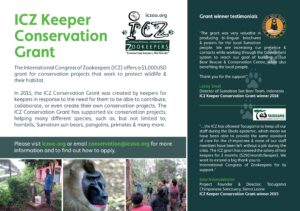
Welcome Deborah
The ICZ would like to welcome Deborah Nolan of DN Creative Marketing & Design to the team! Deborah is from Newcastle Upon Tyne in NE England & is a freelance designer & marketer for her own business. Deborah is also a marketing manager for the U.K. based conservation charity WWT (Wildfowl & Wetlands Trust). Deborah has a passion for animals is excited to be able to support the ICZ!
Deborah is debuting her designs for the ICZ with new 2020 International Zookeeper Day logos! Only 40 days left until IZD! Please enjoy & share the amazing IZD Designs!
FB – @dncreativemarketing
Twitter – @dncreatedesign
www.dncreativedesign.co.uk
New ICZ Advisor: Sabrina Brando
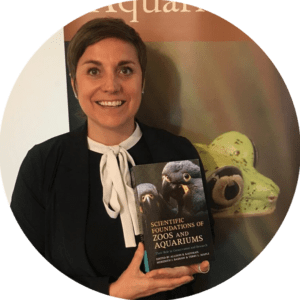
Sabrina Brando is the director of AnimalConcepts, including the Practical Animal Welfare Science platform, a PhD candidate at the University of Stirling in Scotland on the topic of human well-being and is the Primate Care Training Program Coordinator for the Pan African Sanctuary Alliance. She teaches at various universities and colleges, as well as working with many zoos, aquariums and sanctuaries worldwide, on animal welfare, behaviour, environmental enrichment, animal training, the human-animal relationship, and other topics. Sabrina is a Certified Compassion Fatigue Professional and feels compassion and awareness is key in the animal care profession in order for animal care professionals to serve animals and people with compassion and integrity.
Exciting oppurtunity: 5 AICAS memberships free of charge for Latin American Keepers
Please download the application form to apply or contact us at outreach@iczoo.org.
AnimalConcepts is donating free webinars
In support of the animal community worldwide during COVID19 AnimalConcepts is donating 3 free one-on-one 1.5hr webinars this month on a topic of your choice.
The theme this month is: Animal Friendships 🦜🐘🦍 🐷🐵
What do you need to do? You can:
– Send a 1-2 minute video show telling their friendship story
– Send a written (max 500 words) friendship story with a photo of them
Send before 15 May 2020 to info@animalconcepts.eu 🐻🐧🐬
Winners will be notified on 17 May 2020.
Visit AnimalConcepts’ website and Facebook page.
7th International Congress on Zookeeping is postponed
In light of Covid-19, we have made the difficult decision to postpone the 7th International Congress on Zookeeping. We will give you further details once they come to hand. Please stay tuned.
We are looking for a volunteer graphic designer
Solidarity books
In early 2015, our colleague Boris Planell passed away. He was a caregiver who worked at the Havana Zoo, a researcher at the Society for the Conservation and Study of Caribbean Birds (SCEAC) and representative of AICAS in Cuba.
AICAS wanted to help the Boris’s family; his two studying daughters and their mother. A team formed by Raúl Cabrera and Mireia Rosillo compiled Boris’ immense collection of books, management guides, species guidelines, book bindings, scientific articles, children’s stories, dvd’s, and more.
Besides supporting Boris his family, some of the money raised also supported a Latin American keeper to join the ICZ congress in 2018. Undoubtedly, Boris would be very proud to know that, with his books, he has collaborated in the training of a colleague. We will keep supporting keepers to join conferences with some of the money raised.
We would like to encourage you to download the list of books and other products and take a look. If you would like to order something please get in touch via email at: bienestaranimal@aicas.org
Any support will be greatly appreciated!
The shipping costs are at the expense of the buyer (although we can try and use all our contacts to try to avoid those shipment expenses and deliver them by hand, whenever possible).
Thank you!
ICZ Keeper Conservation Grant 2020
The ICZ is pleased to announce the winner of the ICZ Keeper Conservation Grant 2020 is Libassa Wildlife Sanctuary.
The Libassa Wildlife Sanctuary (LWS) is the first and only wildlife rescue center for different species of wildlife in Liberia and officially opened on 2017.
It is a partnership between the Libassa Ecolodge, the Forestry Development Authority (FDA) and the Society for the Conservation of Nature in Liberia (SCNL).
The goals of LWS are:
To provide care to confiscated wild animals kept as pets or destined to bush meat, release them whenever is possible or providing them with lifelong care for the ones that cannot be released.
Other important goals also include:
- The protection of sea turtles nesting grounds
- The training of students and communities on wildlife protection
- To raise awareness on illegal trafficking of wildlife in Liberia through education
- Supporting local communities.
So far, 350 animals have entered the sanctuary and more than 175 have been released back into the wild.
The ICZ grant of $1000 would allow us to improve the center’s old quarantine room, which is currently damaged and in need of repair. Improving this facility will make it available for antelopes/ larger animals that need quarantine, or any other animals that can not be housed in the current building. This will greatly improve the facility and care that can be provided at the Sanctuary.
For more information on the Libassa Wildlife Sanctuary please visit their website.
We would like to thank everyone who submitted an application and ofcourse Fundació Lluís Coromina for sponsoring this ICZ grant.
International Zookeeper Day: October 4, 2019
#internationalzookeeperday
The International Congress of Zookeepers asks you to join in the 4th Annual Celebration of International Zookeeper day this October 4th!
October 4th was proposed by Barcelona Zoo and AICAS (Iberian Association of Zookeepers) in honor of St. Francis of Assisi who advocated that it was the duty of men to protect and enjoy nature. The Barcelona Zoo has celebrated the Day of St. Francis since 1957.
This celebratory day includes all who make it their life’s work to care for animals, whether they are involved with zoos, sanctuaries, rescue centers, parks or reserves. All who work to improve and save the lives of animals shall be commemorated on this day.
This declaration comes at a time when many animal species are in great peril across the globe. Many species are facing extinction, and their ecosystems and habitats are under tremendous pressure from diverse forces, both natural and human-made. Stewardship is the last hope for many endangered species and the professionals who devote their lives to saving species by way of conservation and breeding programs, education outreach, and research work tirelessly to save these animals.
Each October 4th, the ICZ, via International Zookeeper Day, will engage in programs, activities, and ceremonies which encourage education and public awareness of the important role of keepers in wildlife conservation. Please take the opportunity on October 4th to stop and reflect on the huge contribution zookeepers make to the care and conservation of all species great and small.
Here are some ideas on how you can celebrate! Special Keeper Talks Special behind the scenes tours for guests (Show them what your day is like! Give a tour for a donation to raise funds for your favorite conservation organization). Hang out with colleagues (have lunch as a zoo department or outside of work). Hold Zookeeper Olympic Games Have a happy hour or social. Plant a tree on zoo grounds to commemorate the special day. Share, share, share on social media! #internationalzookeeperday How will you celebrate International Zookeeper Day?
Please check out the IZD 2019 Facebook page and share with us!
Association Collaborations: Harpij Enrichment Book
In 1998, Stichting de Harpij published the first edition of the ‘Harpij Verrijkingsboek’ (“Harpij Enrichment Book”); a reference book with ideas for the behavioral enrichment of animals in zoos. Since then, the book has been translated into five other languages: Russian, English, Spanish, Portuguese and Vietnamese.
This book is a great example of the benefits of zookeeping associations around the world working together as part of ICZ: ABWAK and ASZK sponsored the English translation and AICAS translated the book to both Spanish and Portuguese (and even shared it for free with the Spanish and Portuguese speaking delegates of the ICZ congress in 2018). Currently, AFSA is working on a French translation and BdZ on a German version of the book.
